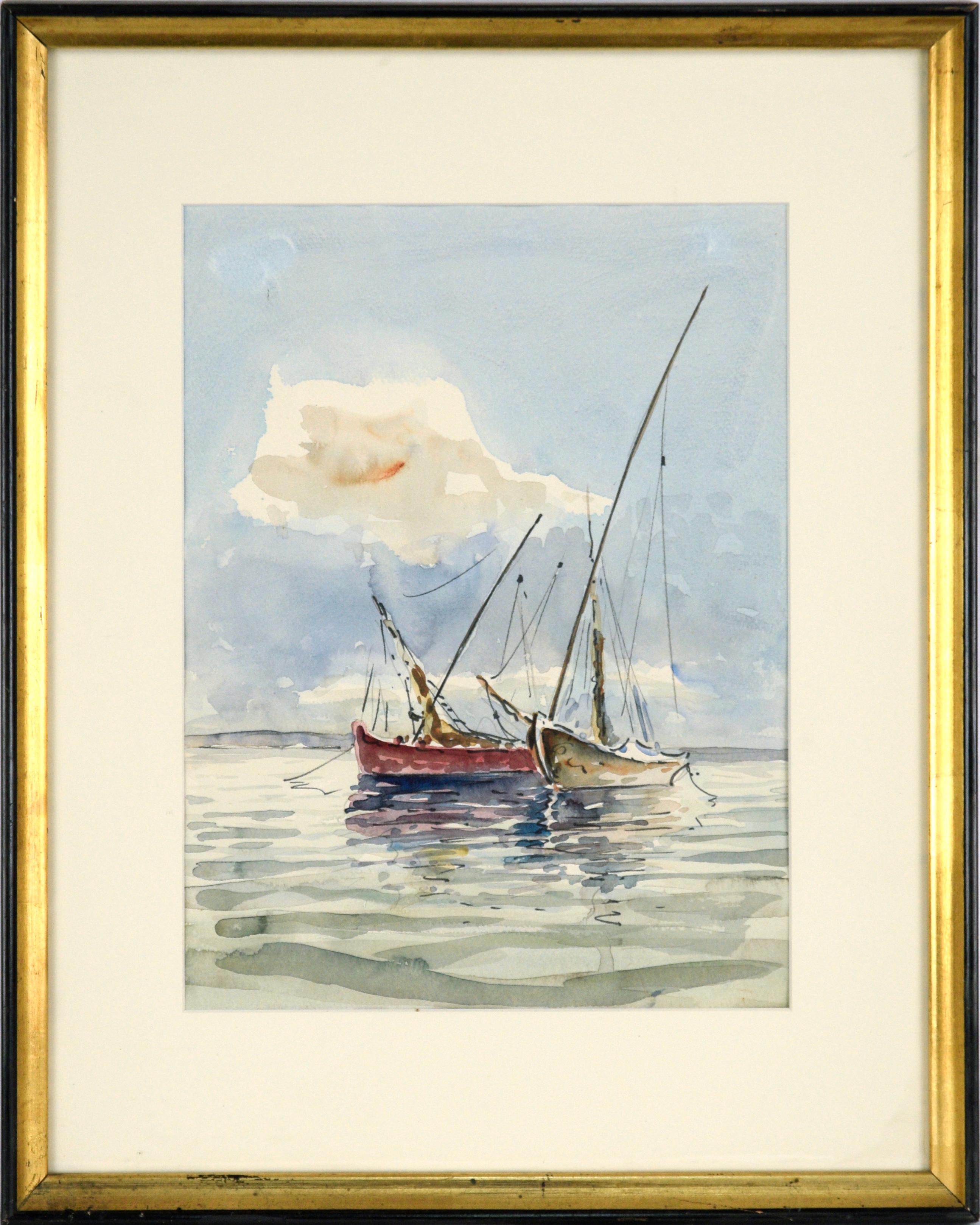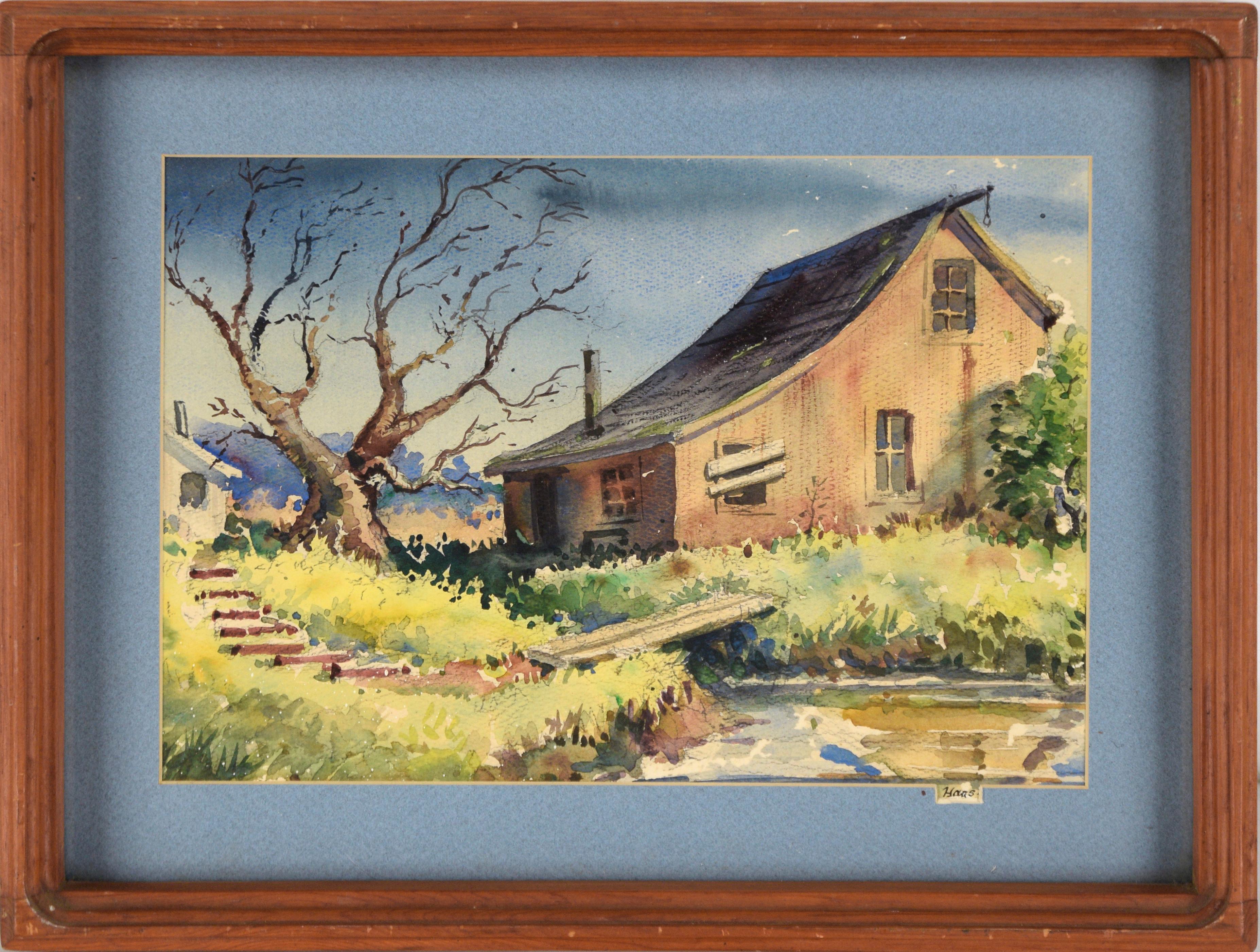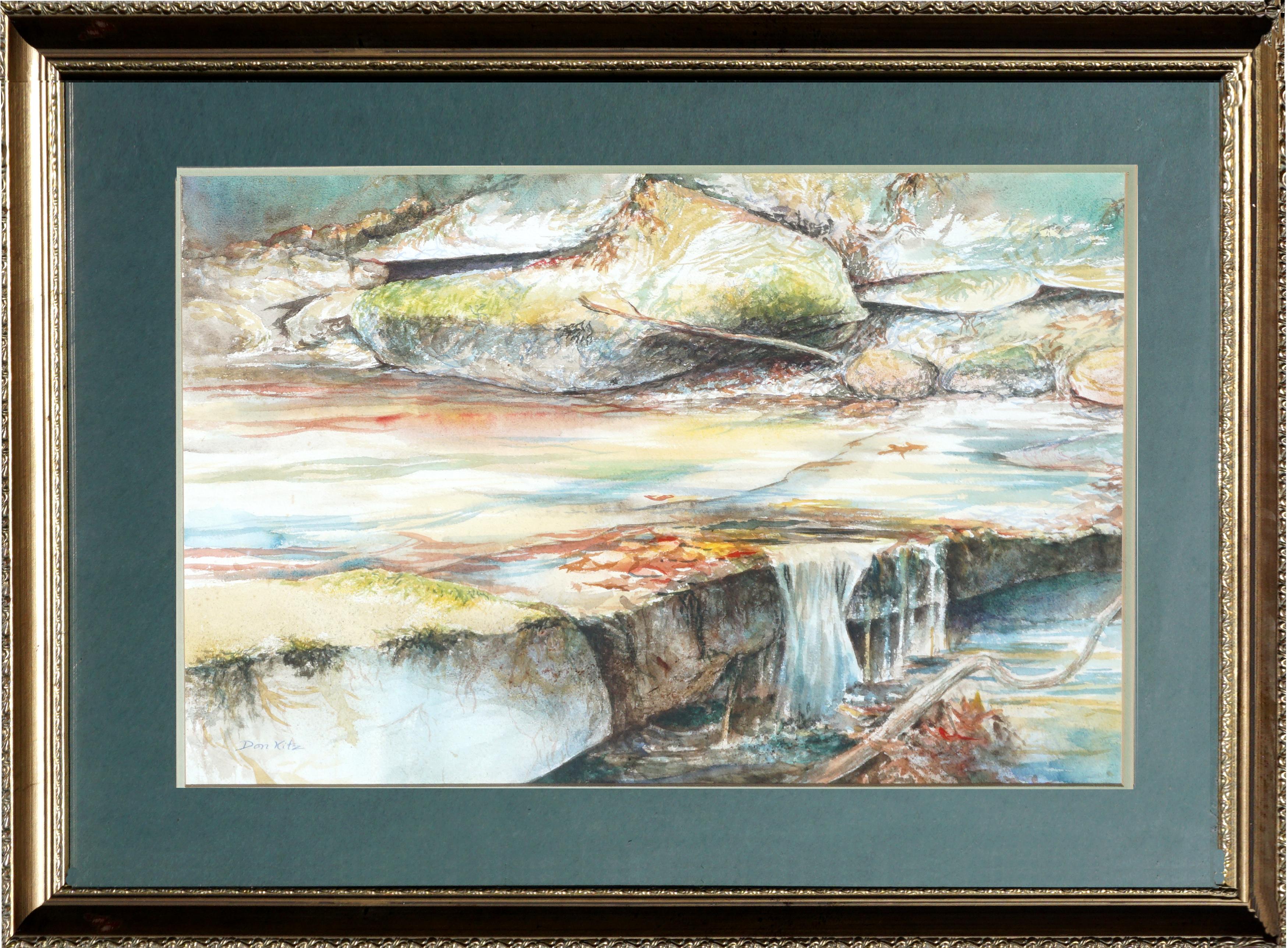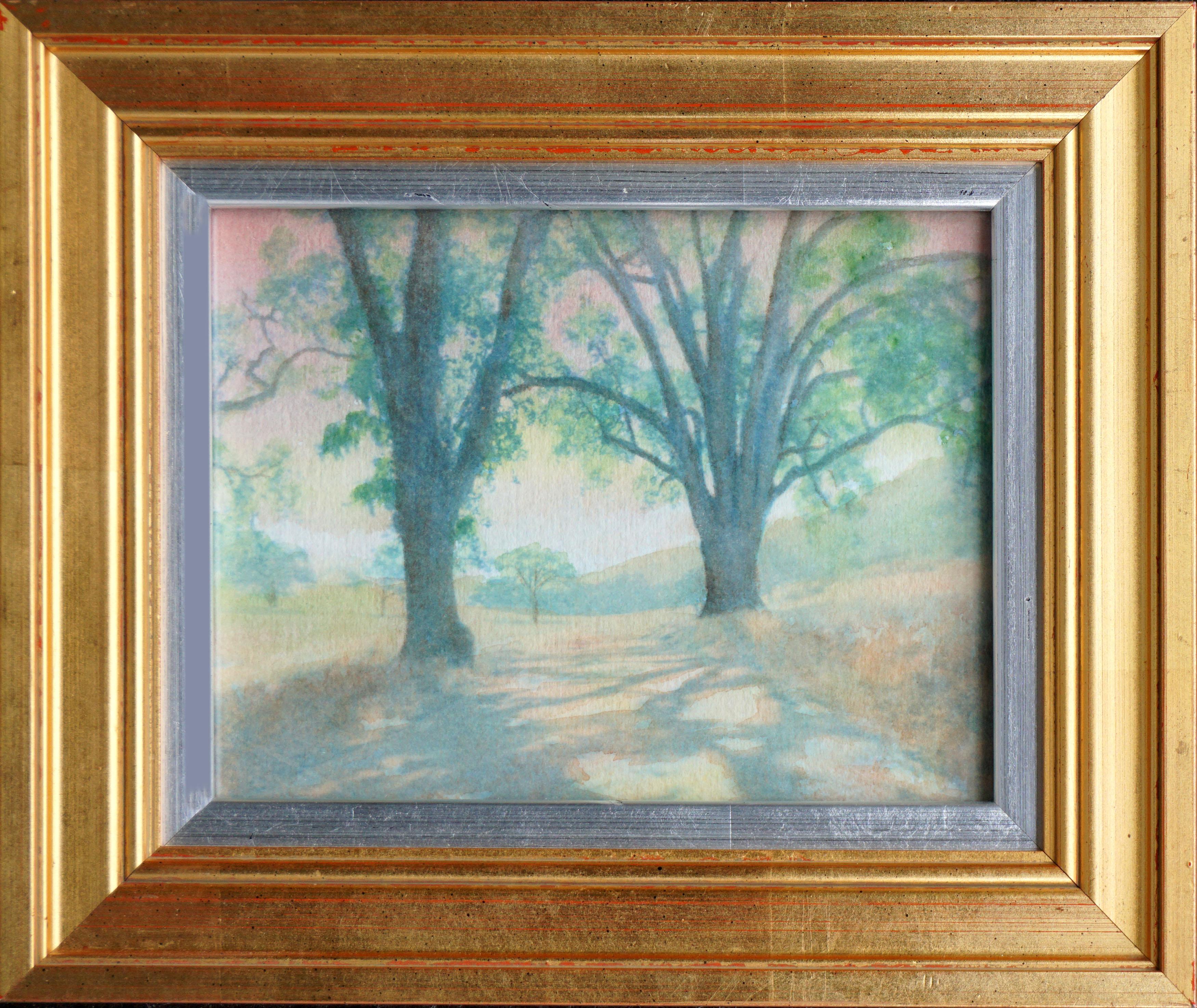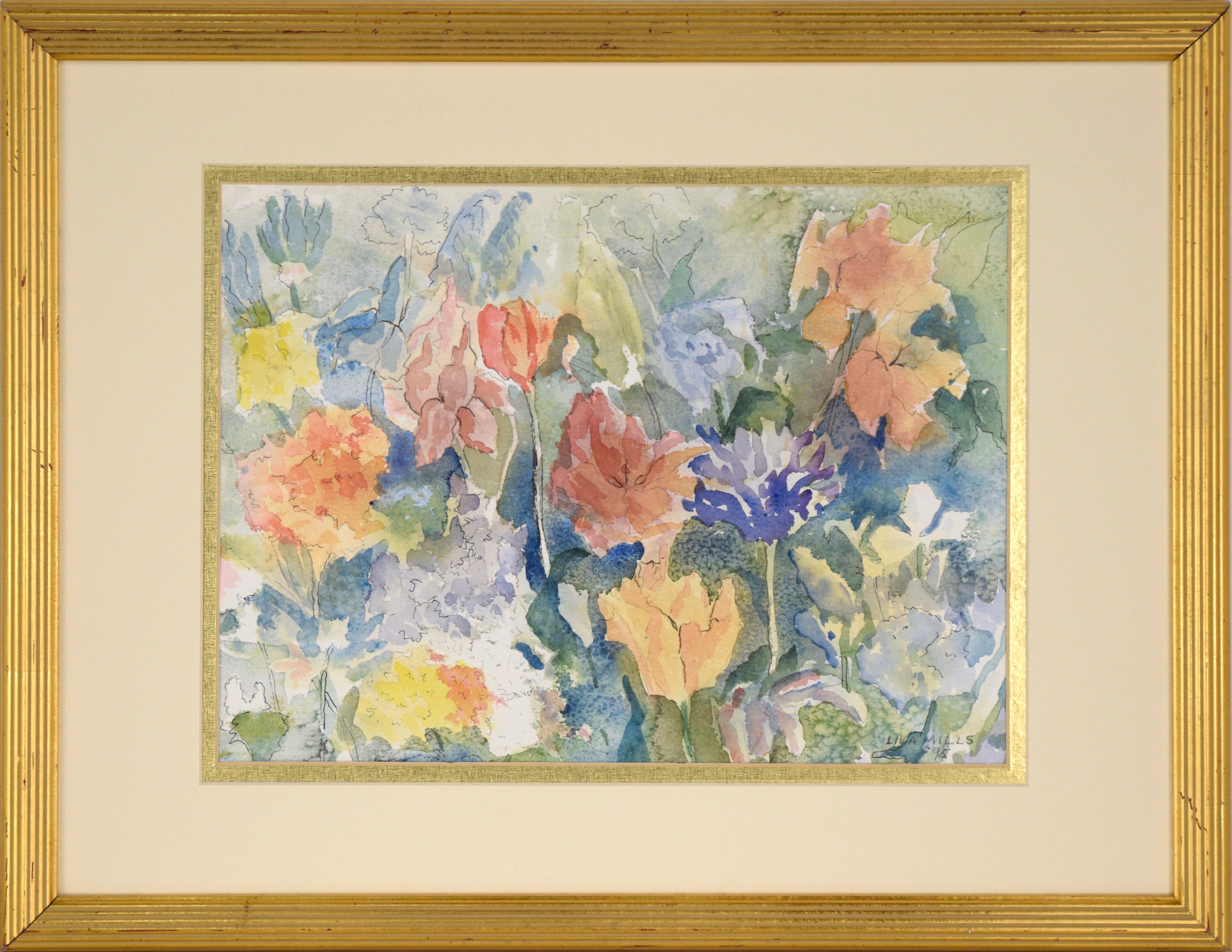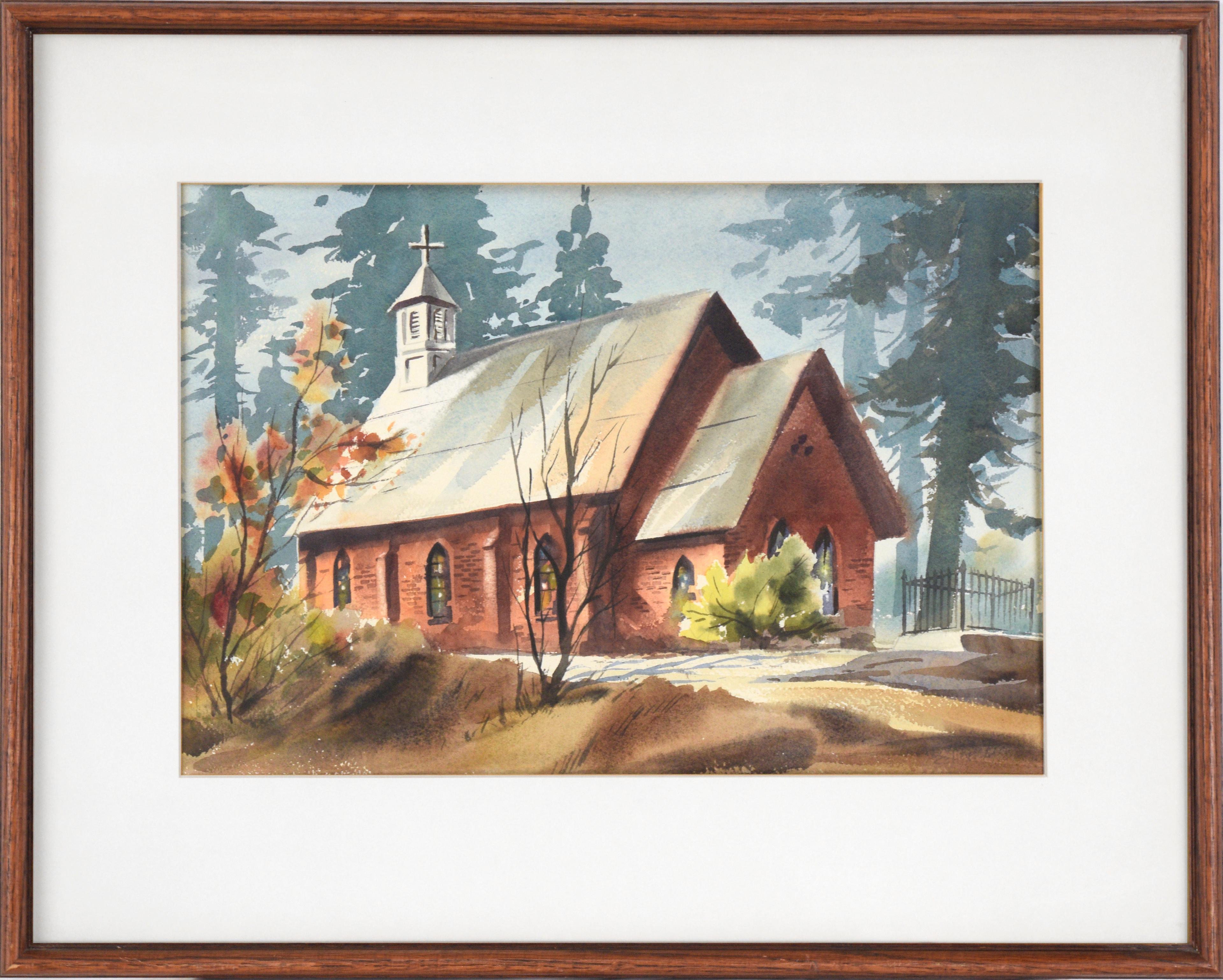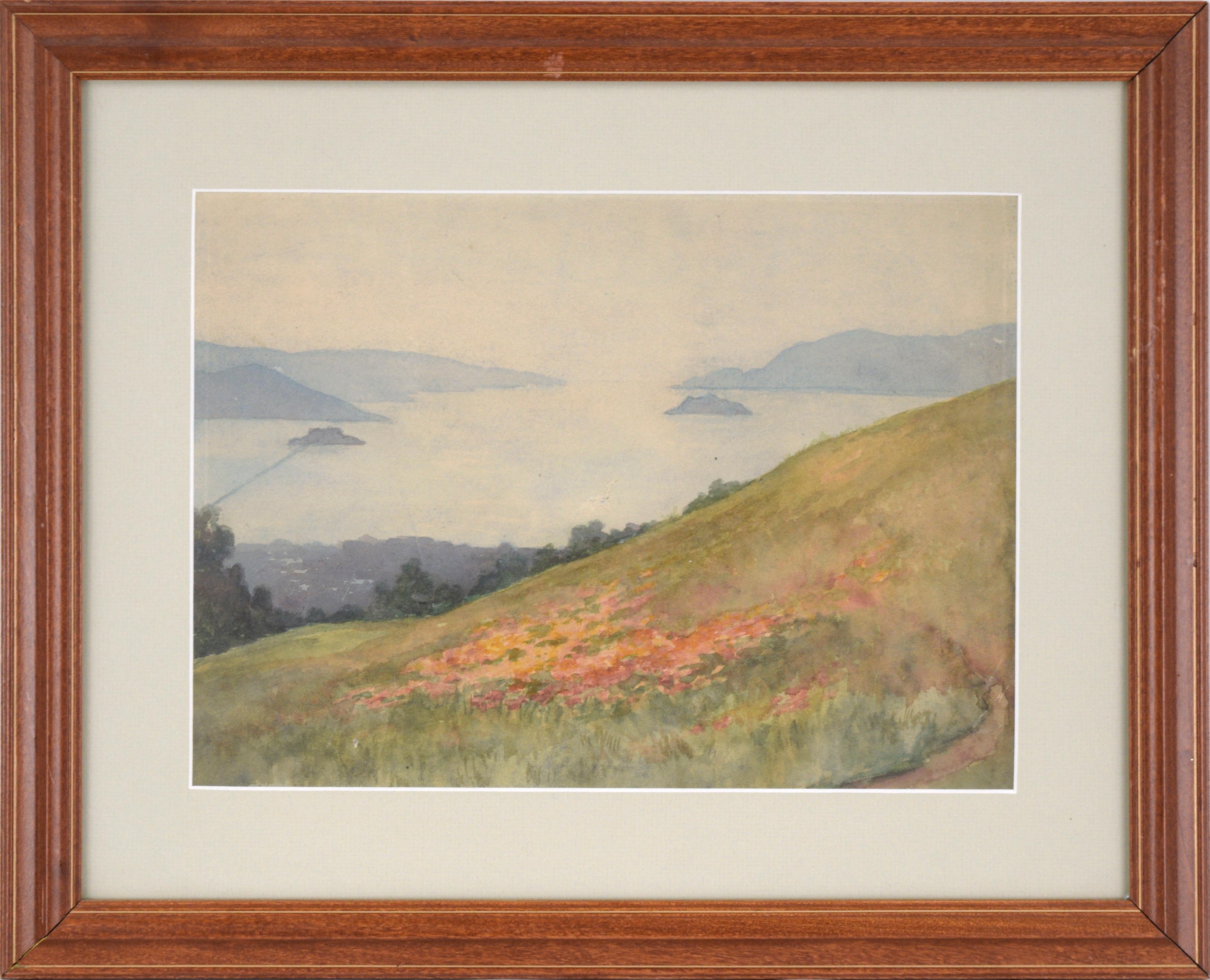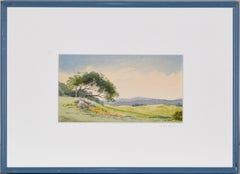
Mid Century Lake Tahoe Landscape
Want more images or videos?
Request additional images or videos from the seller
1 of 9
UnknownMid Century Lake Tahoe Landscape1950
1950
About the Item
- Creation Year:1950
- Dimensions:Height: 22.25 in (56.52 cm)Width: 27.25 in (69.22 cm)Depth: 0.75 in (1.91 cm)
- Medium:
- Movement & Style:
- Period:
- Condition:Some age toning.
- Gallery Location:Soquel, CA
- Reference Number:Seller: JT-D1671stDibs: LU5422226153
About the Seller
4.9
Platinum Seller
These expertly vetted sellers are 1stDibs' most experienced sellers and are rated highest by our customers.
Established in 1986
1stDibs seller since 2014
2,519 sales on 1stDibs
More From This SellerView All
- "Floating Shadows" - Cyanotype / Watercolor Forest LandscapeBy Cheryl TrotterLocated in Soquel, CASoft watercolor accents add to the beauty of this cyanotype and watercolor landscape of forest trees, titled "Floating Shadows", by Cheryl Trotter (American, 20th century), c. 1980's...Category
1980s American Impressionist Mixed Media
MaterialsWatercolor, Laid Paper, Photographic Paper
$460 Sale Price20% Off - 1930's Milford, CT Landscape -- First Church of Christ CongregationalLocated in Soquel, CA1930's watercolor figurative landscape depicting the First Church of Christ Congregational in Milford, Connecticut by J. Nolan of Providence, Rhode Island (American, 20th Century). S...Category
1920s American Impressionist Landscape Drawings and Watercolors
MaterialsLaid Paper, Watercolor
$556 Sale Price20% Off - "Ridge Oak" Northern Mt Tamalpais California Watercolor 1991Located in Soquel, CA"Ridge Oak" Northern Mt Tamalpais California Watercolor 1991 Perfectly executed plein air watercolor looking out towards Mt. Tamalpais in spring by J. Gal...Category
1990s American Impressionist Landscape Drawings and Watercolors
MaterialsWatercolor, Laid Paper
- Ocean Path Through Sand Dunes - Florida LandscapeBy Joseph YeagerLocated in Soquel, CASerene landscape of a path to the ocean through sand dunes by Joseph Yeager (American, 20th century). Signed "Joe Yeager" in the lower right corner. On verso is written "Gift painted...Category
1970s American Impressionist Landscape Drawings and Watercolors
MaterialsWatercolor, Laid Paper
$1,080 Sale Price20% Off - Golden Hour at the River - Watercolor Landscape on PaperLocated in Soquel, CAGolden Hour at the River - Watercolor Landscape on Paper Glowing sunset landscape by Rosalind O'Neal (American, b. 1927). A river winds winds towards the viewer, reflecting the glowing sunset. On the left bank, there are rows of crops in yellow and orange. On the right side, trees and shrubs line the bank. In the distance green and golden hills meet the sky. Signed "Rosalind O'Neal" in the lower right corner. Presented in a copper colored frame with a double mat. Frame size: 17"H x 21"W Image size: 12"H x 16"W Rosalind O’Neal (American, b. 1927) was a longtime Ukiah, CA resident and a member of the Mendocino County Art Association. O’Neal was primarily a watercolor artist, focusing on portraits and landscapes, but has also worked in acrylic at times. 1997 - Ukiah Main Office Savings Bank of Mendocino County, Ukiah, CA 2003 - Savings Bank of Mendocino, Ukiah, CA 2004 - Mendocino County Art Association’s Golden Anniversary...Category
21st Century and Contemporary American Impressionist Landscape Drawings ...
MaterialsWatercolor, Laid Paper
$500 Sale Price20% Off - Country Church in Autumn - Watercolor LandscapeLocated in Soquel, CAIdyllic scene of a church in the countryside by an unknown artist (20th Century). A modest church is surrounded by trees, casting delicate shadows on the building. Some of the trees ...Category
Late 20th Century American Impressionist Landscape Drawings and Watercolors
MaterialsWatercolor, Laid Paper
You May Also Like
- The Rapids (Maine)By John WhorfLocated in Provincetown, MAJohn Whorf, born in 1903, was a talented, opinionated artist who achieved great success at a young age. Encouraged by his artistic father, Whorf studied briefly during his early te...Category
Early 20th Century American Impressionist Landscape Drawings and Waterco...
MaterialsPaper, Watercolor
- "Untitled 1, " Watercolor PaintingLocated in Denver, COClyde Steadman's "Untitled 1" is an original, handmade watercolor painting that depicts an urban landscape with human silhouettes.Category
2010s American Impressionist Figurative Drawings and Watercolors
MaterialsPaper, Watercolor
- "Train Station, " Max Kuehne, Industrial City Scene, American ImpressionismBy Max KuehneLocated in New York, NYMax Kuehne (1880 - 1968) Train Station, circa 1910 Watercolor on paper 8 1/4 x 10 1/4 inches Signed lower right Provenance: Private Collection, Illinois Max Kuehne was born in Halle, Germany on November 7, 1880. During his adolescence the family immigrated to America and settled in Flushing, New York. As a young man, Max was active in rowing events, bicycle racing, swimming and sailing. After experimenting with various occupations, Kuehne decided to study art, which led him to William Merritt Chase's famous school in New York; he was trained by Chase himself, then by Kenneth Hayes Miller. Chase was at the peak of his career, and his portraits were especially in demand. Kuehne would have profited from Chase's invaluable lessons in technique, as well as his inspirational personality. Miller, only four years older than Kuehne, was another of the many artists to benefit from Chase's teachings. Even though Miller still would have been under the spell of Chase upon Kuehne's arrival, he was already experimenting with an aestheticism that went beyond Chase's realism and virtuosity of the brush. Later Miller developed a style dependent upon volumetric figures that recall Italian Renaissance prototypes. Kuehne moved from Miller to Robert Henri in 1909. Rockwell Kent, who also studied under Chase, Miller, and Henri, expressed what he felt were their respective contributions: "As Chase had taught us to use our eyes, and Henri to enlist our hearts, Miller called on us to use our heads." (Rockwell Kent, It's Me O Lord: The Autobiography of Rockwell Kent. New York: Dodd, Mead and Co., 1955, p. 83). Henri prompted Kuehne to search out the unvarnished realities of urban living; a notable portion of Henri's stylistic formula was incorporated into his work. Having received such a thorough foundation in art, Kuehne spent a year in Europe's major art museums to study techniques of the old masters. His son Richard named Ernest Lawson as one of Max Kuehne's European traveling companions. In 1911 Kuehne moved to New York where he maintained a studio and painted everyday scenes around him, using the rather Manet-like, dark palette of Henri. A trip to Gloucester during the following summer engendered a brighter palette. In the words of Gallatin (1924, p. 60), during that summer Kuehne "executed some of his most successful pictures, paintings full of sunlight . . . revealing the fact that he was becoming a colorist of considerable distinction." Kuehne was away in England the year of the Armory Show (1913), where he worked on powerful, painterly seascapes on the rocky shores of Cornwall. Possibly inspired by Henri - who had discovered Madrid in 1900 then took classes there in 1906, 1908 and 1912 - Kuehne visited Spain in 1914; in all, he would spend three years there, maintaining a studio in Granada. He developed his own impressionism and a greater simplicity while in Spain, under the influence of the brilliant Mediterranean light. George Bellows convinced Kuehne to spend the summer of 1919 in Rockport, Maine (near Camden). The influence of Bellows was more than casual; he would have intensified Kuehne's commitment to paint life "in the raw" around him. After another brief trip to Spain in 1920, Kuehne went to the other Rockport (Cape Ann, Massachusetts) where he was accepted as a member of the vigorous art colony, spearheaded by Aldro T. Hibbard. Rockport's picturesque ambiance fulfilled the needs of an artist-sailor: as a writer in the Gloucester Daily Times explained, "Max Kuehne came to Rockport to paint, but he stayed to sail." The 1920s was a boom decade for Cape Ann, as it was for the rest of the nation. Kuehne's studio in Rockport was formerly occupied by Jonas Lie. Kuehne spent the summer of 1923 in Paris, where in July, André Breton started a brawl as the curtain went up on a play by his rival Tristan Tzara; the event signified the demise of the Dada movement. Kuehne could not relate to this avant-garde art but was apparently influenced by more traditional painters — the Fauves, Nabis, and painters such as Bonnard. Gallatin perceived a looser handling and more brilliant color in the pictures Kuehne brought back to the States in the fall. In 1926, Kuehne won the First Honorable Mention at the Carnegie Institute, and he re-exhibited there, for example, in 1937 (Before the Wind). Besides painting, Kuehne did sculpture, decorative screens, and furniture work with carved and gilded molding. In addition, he designed and carved his own frames, and John Taylor Adams encouraged Kuehne to execute etchings. Through his talents in all these media he was able to survive the Depression, and during the 1940s and 1950s these activities almost eclipsed his easel painting. In later years, Kuehne's landscapes and still-lifes show the influence of Cézanne and Bonnard, and his style changed radically. Max Kuehne died in 1968. He exhibited his work at the National Academy of Design, the Art Institute of Chicago, the Carnegie Institute in Pittsburgh, the Memorial Art Gallery of the University of Rochester, and in various New York City galleries. Kuehne's works are in the following public collections: the Detroit Institute of Arts (Marine Headland), the Whitney Museum (Diamond Hill...Category
1910s American Impressionist Landscape Drawings and Watercolors
MaterialsPaper, Watercolor
- "Cloudy Dock Scene", working peir with fishermen, boats, and architectureBy John Cuthbert HareLocated in Rockport, MAJohn Cuthbert Hare was an accomplished New England painter born in Brooklyn, New York. He began his artistic journey by studying commercial art at the Pratt Institute in New York Cit...Category
Mid-20th Century American Impressionist Landscape Drawings and Watercolors
MaterialsPaper, Watercolor
- Pink Umbrella. Green ChairBy Mary RobertsonLocated in Burlingame, CASerene river scene watercolor from important Bay Area figurative contemporary artists Mary Robertson, who is associated with the Bay Area Figurative School, founded by Elmer Bischoff...Category
2010s American Impressionist Landscape Drawings and Watercolors
MaterialsWatercolor, Paper
- Canal at Indian Mound RoadBy Ben FenskeLocated in Sag Harbor, NYPainted during the 2015 Winter Equestrian Festival in Wellington, Florida. A black and white depiction of a canal, is barely recognizable, due to Fenske's wild brushstrokes and lack...Category
21st Century and Contemporary American Impressionist Landscape Paintings
MaterialsGouache, Paper
Recently Viewed
View AllMore Ways To Browse
Tahoe Paintings
Tahoe Painting
Lake Tahoe Painting
Ronald Phillips
Vintage Pra
80s Memphis
Memphis 80s
William Mcbride
Watercolor Cherry Blossom
Holiday Inn Sign
Cora Glasses
Watercolor Landscapes Of South Mediterranean
Edward Seago Watercolour
Sharon Sprung
Used Drums Boston
E Bartlett
La Vendange
Poster Hans Christian Andersen
